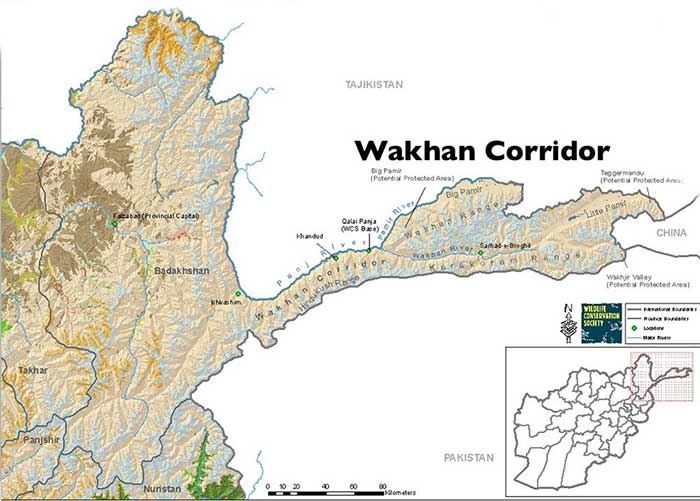Afghanistan In Talks With China To Re-Establish Old Silk Road Trade Routes
Opening up the Wakhan Corridor seen as a potential land trade bridge
Afghanistan’s Industry and Commerce Minister, Nooruddin Azizi, has been holding trade and investment talks with Beijing and called for China to speed up its efforts for reopening of the Silk Road trade routes, and specifically the Wakhan Corridor, an Afghan valley route that at the Eastern end bisects China and Tajikistan and connects China with Afghanistan via a 98 km wide strip of land at the China end.
Azizi said that using the Wakhan Corridor can increase the level of trade between the two countries and become a reliable route for the transit of goods, stating that “The Islamic Emirate of Afghanistan (IEA) has announced its preparations for the opening of this corridor and asks the respected authorities of the People’s Republic of China to speed up the process of opening this route.”
The Wakhan Corridor would need significant investment to make it usable for anything above heavy duty SUVs and Camels. It is a high altitude, ancient pass with no amenities, 350km in length between the border with China near to Taxkorgan in Xinjiang Province, and Ishkashim in Afghanistan’s North-Eastern Badakhshan Province. In its current state, (the author has visited the region) the Wakhan Corridor is only passable for five months of the year.
Running West from the China border, the Wakhan corridor forms a strip of Afghanistan that bisects Pakistan and Tajikistan. The Chinese side is heavily militarized. Only local nomads are allowed to roam the area.

The development of the Wakhan Corridor, which would be expensive, would help with the reconstruction of Afghanistan and assist with the transformation from a nation at perpetual war to production and peace. While Chinese construction companies have the capabilities, building a Wakhan Corridor route would run into tens of billions of dollars of costs with more needed to provide essential transport and logistics services in addition to security.
Afghanistan is a key part of Central Asia, bordered by Pakistan to the east and south, Iran to the west, Turkmenistan to the northwest, Uzbekistan to the north, Tajikistan to the northeast, and China to the northeast and east. This position marks it out as a Central Asian hub, which could connect with ocean ports via Pakistan, Turkmenistan, and Iran, which would also assist landlocked Uzbekistan reach markets in South Asia and to Europe. Iran has recently announced it intends building rail connections through to Herat, which would provide access to the INSTC. Beijing has previously announced it is prepared to support the development of Trans-Afghan railways.
In September, Azizi said that Afghanistan should be included in the multibillion-dollar China-Pakistan Economic Corridor (CPEC) infrastructure project, which is a central part of the Belt and Road Initiative, mentioning that “In talks we had with China, it was mentioned that we should partner with China in the Belt and Road Initiative and China-Pakistan-Economic Corridor and other programs that China has at the international level.”
Related Reading





